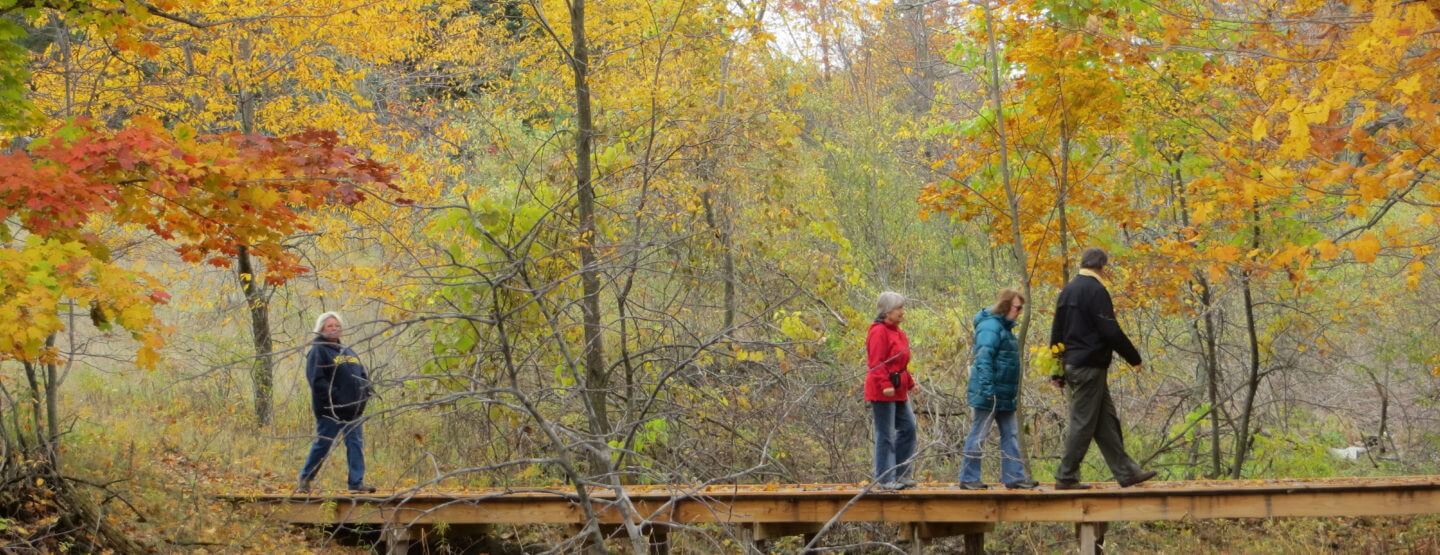A Treasured Natural Area in the Village of Empire
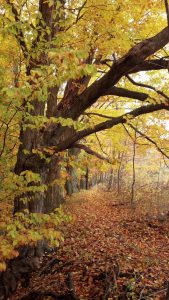
There’s a large field, remnants of an old orchard, a sixty-five-year-old planting of pines, and a little creek on the outskirts of the village of Empire that you might miss if you didn’t know it was there. A small parking area and sign announce that it’s the Chippewa Run Natural Area. It was established by the Leelanau Conservancy in 2000 with the help of donations from Conservancy patrons and local people. It was one of the woodsy playing areas for children in the Taghon, Deering, Payment, Davis, Aylsworth, and Harriger families, and a few other local families of long-standing, and they felt it was important to have it be there for their children, too.
Empire: A Storied, Charming Village
Empire, a former lumber boom town, is a village of about 400 people on the shores of Lake Michigan. It’s a cross-hatch of little streets and alleys, half a dozen angling north and south, and maybe two or more going east and west. Community gatherings have always been a staple of the village. People are close. There’s a place for ice-skating and a ball field. The town’s only about a mile wide in any direction.
It’s a good place for children since the parents usually know they haven’t gone too far. They can’t, really. Lake Michigan hems them in on the west side of the village and M-22 on the east side; the Empire Bluffs and the Sleeping Bear Dunes provide somewhat of a barrier south and north. The children are usually within hailing distance of their own or someone else’s parents. It’s a good place to grow up, the kind of village many older Americans knew as children: a center of civilization, surrounded by nature.
Chippewa Run is a lovable piece of land at the edge of the village, one of nature’s gifts, and people appreciate it. The creek is a good and easy place for children to fish for brook trout; it goes underground occasionally but eventually wends its way to South Bar Lake a mile or two down through the fields and swamps toward Lake Michigan. The cherry trees have been mostly cut down but there are still some people around who remember picking cherries there as children, the orchard filled with local families and the families of Hispanic migrants. For children, too small to last long at the picking, this was a paradise of painted turtles, some so tiny they must have just hatched, and the tin bucket for the cherries, it was quickly discovered, was perfect for a baby turtle.
How Chippewa Run Earned its Name
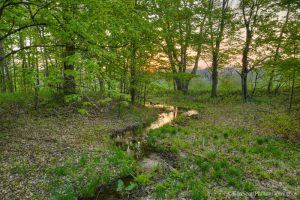
“Chippewa Run received its name after a local naming contest,” says Dave Taghon at the Empire Museum down the road. People wanted to honor the Chippewa family, known as the Indian Jackson family, who had a seasonal camp there. Frank Fradd, born in Empire in 1892, visited the camp as a boy and wrote about this in a book of oral histories, “Some Other Day (Remembering Empire),” collected and published by the Empire Heritage Group. The camp was in a clearing, as Frank described it. There was good drinking water from the spring and a cool creek in which to store perishables. Fish and game were smoked and dried. The housing was made of lightweight poles covered with animal hides and bark.
Fradd also reports that he could remember the virgin timber all around the town of Empire, the trees three feet in diameter, with some maple and hemlock four feet in diameter, and the gray elm six feet in diameter, a time when a clearing was less common than a forest. Frank Fradd roamed the entire peninsula during the Great Depression, looking for Ginseng, which could be sold in Ohio for $25 a pound, good money in those days. Fradd describes trying to visit an eagle nest when there were hatchlings in it and how the male and female eagles could see him, no matter how well he thought he was hidden, and would dive at him and hiss.
Witnessing Forest Succession in Action
The land at Chippewa Run is slowly going back to the original forest, in a process of reverse aging called succession: first the old orchard will decay; then the fields will fill with grass; then with sumac, juniper and wild strawberry; then with cedar, aspen, birch and pine; and gradually over time, it will become a beech and maple forest with more cover for birds and animals.
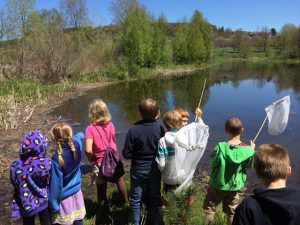
The village of Empire is itself an example of succession, albeit of human communities, and going forward in time, not back: from Native American; to early pioneers; to European immigrants; to the lumber boom town; to the classic village with a church and a bank; to the urban and educated retirees coming to live where there’s still natural beauty; to the current influx of more than a million tourists a year coming to visit the Sleeping Bear Dunes National Lakeshore. As in the case of ecological succession, all the stages overlap a little.
Lou Ricord, a docent for the Leelanau Conservancy, often takes people on nature hikes through Chippewa Run. A scientist by vocation and avocation, a retired professor from Ohio University, Ricord has researched the pocket gopher at Chippewa Run. One can see the little trails under the soil of the pocket gopher, he says, but these gophers are nocturnal and one would be hard-pressed to see them in the daylight.
What is a Pocket Gopher?
The pocket gopher has fur-lined cheeks, Ricord divulges with obvious delight. These cheeks, or pockets, have external openings and are used for storing the dirt the gopher pulls from the tunnels. The pocket gopher, probably finicky about dirt, can put its front lips behind its teeth so it doesn’t get dirt in its mouth. To picture this, imagine big buck teeth, top and bottom, with expandable lips that can go wherever the pocket gopher wants them to go. The pocket gopher didn’t just think of this one night after dinner while drinking beer and watching TV, the Knicks and the Red Wings in a final playoff, his wife in the kitchen making mincemeat with brandy and listening to La Traviata, but evolved this over thousands of years.
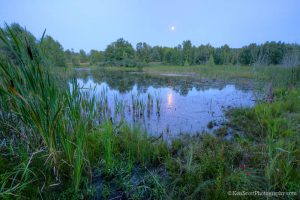
Blue flag iris, an electric shade of royal purple, dot the wetlands along the sluggish, spring-fed creek that meanders through the old meadow. Sir John Lubbock, an English baron and friend and neighbor of Charles Darwin, felt that the wild iris is especially attractive to bees. To watch, as Lubbock did as a kid, a little bee alight on the lip of the sepal, the outer part of the flower, scrape her back against the down-hanging stigma, the bright yellow part of the flower, then crouch along the faintly striped tunnel to where the nectar is, inspired Lubbock to conclude that the complicated pollination of the blue flag iris led to the most brilliant and beautiful flowers.
Traditionally in England, for at least the last five hundred years, and increasingly this is the case in America, too, since we mostly now all inhabit cities at a great remove from the countryside, there have been only two kinds of children able to explore nature: children from families rich enough to own a lot of undeveloped land around their houses; and children from farm families who worked the land. Urban dwellers are largely cut off from nature, except for excursions.
You’ll discover, if you ask, that most people who love nature were immersed in it as children, not as a managed experience, but as a random one, where they had constant access without thinking too much about it, access that would allow them to catch a baby turtle in a bucket or watch a bee pollinate an iris. The meadows, cedar swamps, pine woods, and meandering creek at Chippewa Run are the kinds of things that used to be at the edge of every small village.
Fradd, writing in “Some Other Day,” that wonderfully gathered collection of oral histories, describes a migration of hawks in 1912, where they began migrating in September and continued through November. There were thousands of hawks in the sky, daily. No one knew why. Perhaps they had been displaced by timber cutting. This unusual three-month-long hawk migration was reported all over the west coast of Michigan. Fradd speculated that those particular hawks may have become extinct because they were never seen again.
Blue Jays Flocking and Green Herons Nesting
Lou Ricord, like Frank Fradd from a hundred years earlier, both close observers of nature, says he saw a similarly strange phenomenon two or three years ago, when he saw blue jays flocking. “There must have been two hundred of them, maybe more,” he says. “Blue jays don’t flock. But I saw them.”
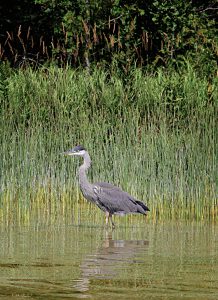
There are green herons here, too, at Chippewa run. These green herons are somewhat less long-necked than their blue heron cousins and appear to be chunkier. They nest in the tops of the pine trees. And when one takes off from the top of a pine, it sounds like what one imagines would be the sound of a horse in flight, if horses could fly.
There are lots of dragonflies here. The metallic blue-green sheen of the dragonflies’ wings, like little mirrors, catches the sunlight as they flit over the stream. The wings seem to reflect the colors of the deep green of the cedars, the electric purple of the blue flag irises, and the light bouncing off the waters of the creek below, making the air shine and reverberate with iridescent light.
On a soft spring morning, so soft and so quiet, hardly any traffic yet on the roads, lying down in the blooming wild strawberries and daisies at Chippewa Run, like a deer, one can hear the bees and, farther away, the waters of the creek, rippling over the land, tricking this way and that, a riverine tenor counterpoint to the soft, alto hum of the bees.
Another student of nature, Henry Thoreau, writing in 1843, understood the thrill of wilderness. “Not yet subdued by man,” he writes, “its presence refreshes him.” Frank Fradd and Henry Thoreau, these are the rustic American aristocrats, able to educate themselves in the woods, like their more privileged noble counterparts, the Darwins and the Lubbocks on their baronial English estates, about things like the bees inside the wild irises, and the phenomenal migration of hawks.
 About the Author: Kathleen Stocking is an award-winning essayist who lives on the Leelanau Peninsula. Her third book, “The Long Arc of the Universe,” was published in 2016.
About the Author: Kathleen Stocking is an award-winning essayist who lives on the Leelanau Peninsula. Her third book, “The Long Arc of the Universe,” was published in 2016.
From a New York Times review: “All of us are watchers, but few are observers. Missing are the village elders and seers, the astute perceivers who interpreted life and effort through nature and the primal cycles. Kathleen Stocking is one of those seers, and she’s delightful.”

